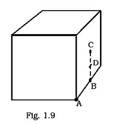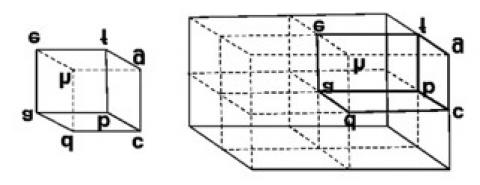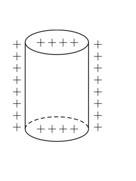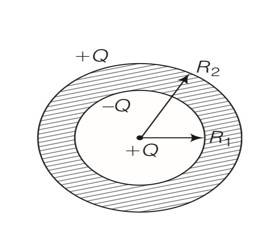Physics Ncert Solutions Class 12th
Get insights from 1.2k questions on Physics Ncert Solutions Class 12th, answered by students, alumni, and experts. You may also ask and answer any question you like about Physics Ncert Solutions Class 12th
Follow Ask QuestionQuestions
Discussions
Active Users
Followers
New answer posted
4 months agoContributor-Level 10
Explanation- (i) F= = 9 109 (34.8 103)2/ (10-2)2=1.09 1023N
(ii) F= = 9 109 (34.8 103)2/ (100)2=1.09 1015N
(iii) F= = 9 109 (34.8 103)2/ (106)2=1.09 107N
New answer posted
4 months agoContributor-Level 10
This is a Short Answer Type Questions as classified in NCERT Exemplar
Explanation- 1 molar mass of Al has NA (Avogadro number)= 6.023 1023
M= m= 6.023 1023/27 0.75 = 1.6 1022
Magnitude of positive and negative charges in one paisa coin = Nze
As aluminium has 13 electron and 13 protons so
= 1.6 1022 13 1.6 10-19=33.28 103C.
New answer posted
4 months agoContributor-Level 10
This is a Short Answer Type Questions as classified in NCERT Exemplar
Explanation – in these type of question imagine another cube along the charge is kept in 3 dimensional aspects.
- In this part the charge is situated at the corner of cube here we can placed 7 more cube joining the corner of that cube . so charge is being shared by 8 cubes.
Therefore, the total flux through the faces of the cube= q/8 ε0
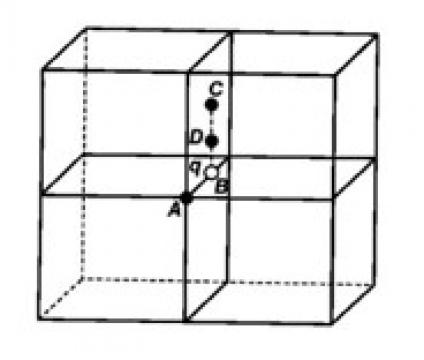
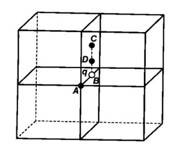
New answer posted
4 months agoContributor-Level 10
This is a Short Answer Type Questions as classified in NCERT Exemplar
Explanation- No field inside a hollow body because if we give charge to a hollow body whole charge is distributed outside its surface. This phenomenon is called electrostatic shielding which is used to protect things from electric field or electric shock.
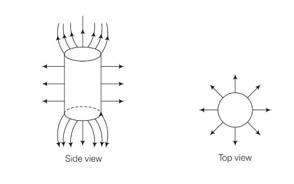
New answer posted
4 months agoContributor-Level 10
This is a Short Answer Type Questions as classified in NCERT Exemplar
Explanation- if the total charge inside a surface is zero it does not mean that electric field is zero may it will flow from inside to outside or vice versa. But if electric field is zero then charge must be zero .
New answer posted
4 months agoContributor-Level 10
This is a Short Answer Type Questions as classified in NCERT Exemplar
Explanation- In any neutral atom, the number of electrons and protons are equal, and the protons and electrons are bound into an atom with distinct and independent existence. Electrostatic fields are caused by the presence of excess charges. But there can be no excess charge of an isolated conductor. So, the electrostatic fields inside a conductor is zero
New answer posted
4 months agoContributor-Level 10
This is a Short Answer Type Questions as classified in NCERT Exemplar
Explanation – (i) surface density=charge/area= -Q/4 12
(ii) surface density=charge/area= +Q/4 22
New answer posted
4 months agoContributor-Level 10
This is a Short Answer Type Questions as classified in NCERT Exemplar
Explanation- Electric flux through a dipole is always zero, because the positive and negative charges cancel each other out
New answer posted
4 months agoContributor-Level 10
This is a Long Answer Type Questions as classified in NCERT Exemplar
Explanation- electric field at the axis of the ring is E=KQy/ (R2+z2)3/2 where z is distance .
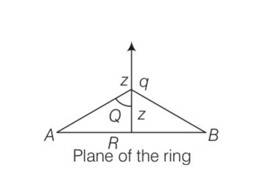
F=qE=KQqy/ (R2+z2)3/2
When z<
F= = -Kz
So force is directly proportional to – distance that is completely defined that is follows S.H.M
(b)w=
T=2 w=2
T=2
New answer posted
4 months agoContributor-Level 10
Explanation- two charge -q at A and B
AB=AO+OB=2d and x= small distance perpendicular to O
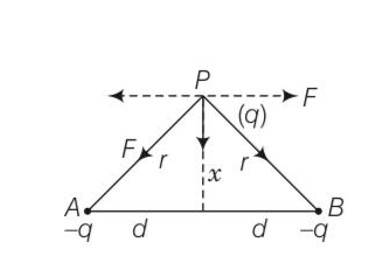
When x
F=qq/4 where AP=BP=r but horizontal components gets cancel out each other and vertical components gets add .
If angle APO=O the net force on q along PO is F'= 2Fcos
= =
When x
K= ,F
Force on charge q is proportional to its displacement from the center O and it is directed towards O
Hence we can say that motion of charge would be simple harmonic
Where w= and T=
T= 2 = 2 = [8π3?o md3/q2]1/2
Taking an Exam? Selecting a College?
Get authentic answers from experts, students and alumni that you won't find anywhere else
Sign Up on ShikshaOn Shiksha, get access to
- 65k Colleges
- 1.2k Exams
- 686k Reviews
- 1800k Answers

